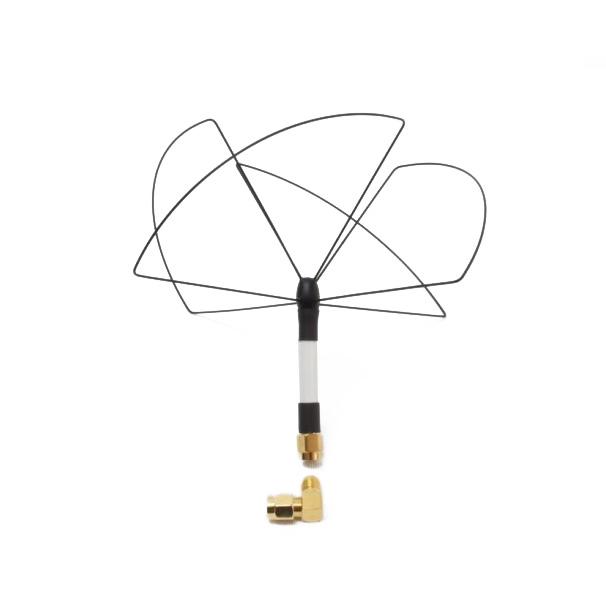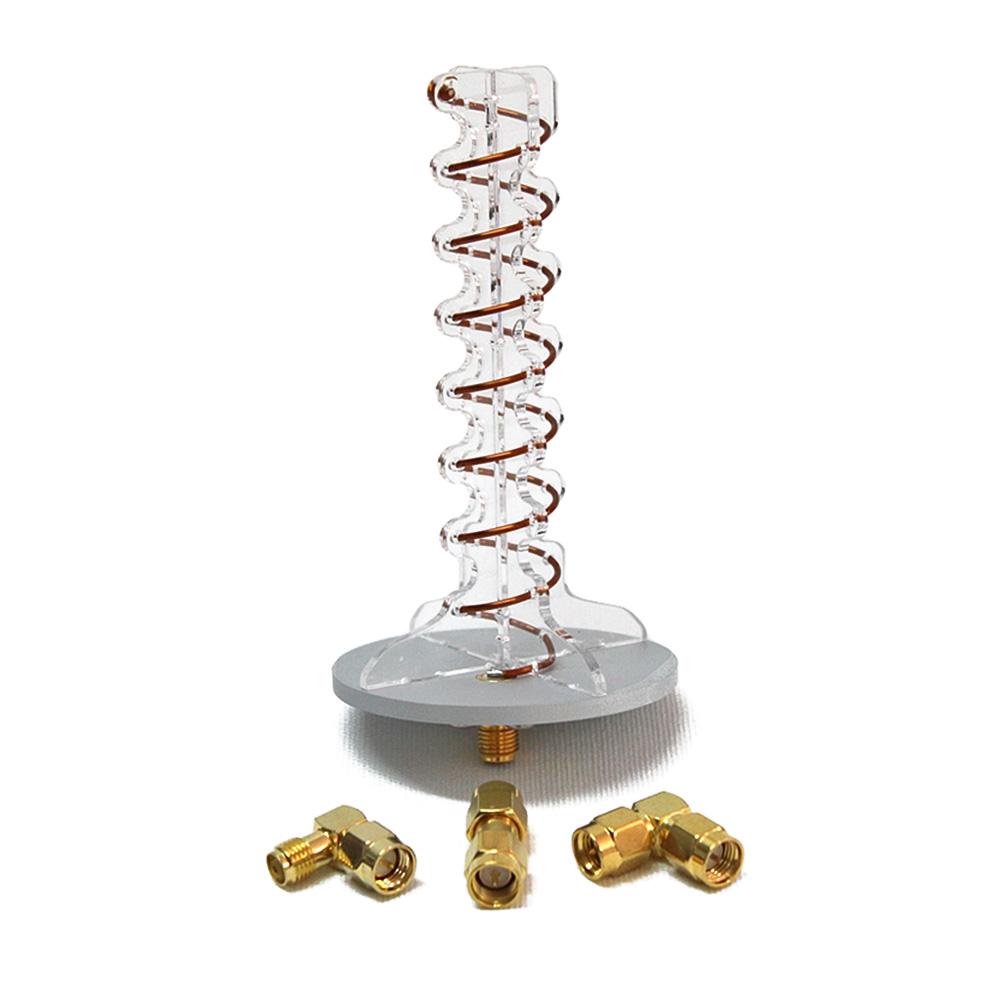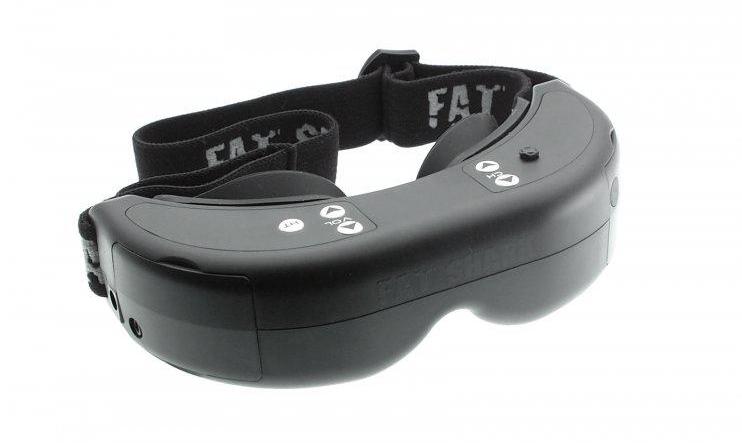Multi-Rotors, First-Person View, And The Hardware You Need
Video Systems: Antennas And Goggles
Range is achieved in an FPV setup through a combination of transmission power (in mW) and antennas, with surprising weight on the latter. Antenna choice determines the form the radio wave takes. Generally, you're choosing between linear and “right-hand circular polarized” (RHCP or just CP). A circular polarized setup reduces interference caused by multipathing. In the same way that polarized sunglasses block reflected light, a polarized radio setup blocks signals that have “bounced”, and be arriving later than intended.
Secondly, antennas are either omni-directional or directional. This is fairly self-explanatory. Directional antennas come in different forms (such as Yagi, patch, helical), and have different levels of directionality, measured in decibels. Directional antennas are used at the receiver, not the transmitter.
The higher the dB of an antenna, the more directional it is. Directional antennas must obviously be pointed towards the craft at all times, which can limit flying options. Antenna trackers can be used to automatically pan and tilt the antenna towards the rig using telemetry data, but this is a premium optional extra.
Just as important as transmitters (shortened to Tx) are receivers (Rx). There is relatively little difference between receivers, although some are fitted with tuned filters to reduce interference bleed from other frequencies. Be sure to double-check that your receiver's channel mappings match the transmitter. As we'll see next, receivers can also be built into display devices.
The last critical piece of your FPV setup is a display, which can either be a monitor or goggles. PC displays will work, though there are also video stations specifically for hobbyists, too.
FatShark is the big name in FPV-specific video goggles. The company's Dominator model (soon to be replaced by the higher-resolution Dominator V2) is a near faultless system, with module bays for head-tracking or built-in receivers, if required.
The advantage of goggles over a monitor is total immersion. Good goggles block outside light, so regardless of the sun's brightness, the image you see is easily visible and free from glare. The experience is similar to watching your flight from the middle row of an empty movie theater.
Get Tom's Hardware's best news and in-depth reviews, straight to your inbox.
Current page: Video Systems: Antennas And Goggles
Prev Page Video Systems: Cameras And Radio Gear Next Page Control Systems-
gio2vanni86 Great article, and quite an amazing beautiful video shot at the end. Been seeing these around, and have really loved the idea of filming at a elevated level. I actually do hope you guys do more of these. I am bookmarking this for future reference. Thank you.Reply -
freiss Darn it, now you've piqued my interest. :-)Reply
As stated below, a rundown on build costs would be nice. Hey, you could even do a series of FPV articles akin to the PC builds...budget, mid-range, and enthusiast! -
Steveymoo So, how much would the components cost to lift a heavy DSLR with some decent glass? I is pretty curious.Reply -
es0 It would be awesome if you did build guides for different aircraft. I have begun building different ground based vehicles using arduinos and Pi's and would love to take to the skys next!Reply -
thechief73 Excellent article, nicely explained. Also glad to see someone in the media make a clarification from drones and multi-copters.Reply
FYI, DO NOT CALL THESE DRONES: Drones are for military use to kill people. These are, as the authors title states: multi-copters, multi-rotors, or RC model aircraft. By using the word "Drone" you give all the uneducated fear mongers and the law writers canon fodder to regulate this hobby into oblivion before it really gets a chance to take off. Some states and other countries have already passed laws that almost or outright make this hobby a CRIME!
I have been in the hobby about a year now and I have to say it is so far one of the most fun and rewarding things I have done. I will be doing this until I no longer have the means to do so. I highly recommend anyone that is interested in joining the hobby to buy a Hubsan X4 or one of the many similar RTF mini-quad models. This is widley regarded as the best way to learn how to fly a multi-rotor.
http://www.youtube.com/user/juz70/videos - not my channel, just really neat.
So, how much would the components cost to lift a heavy DSLR with some decent glass? I is pretty curious.
Just a few options: DJI S1000, SkyJib-8 Ti-QR, and CINESTAR-8.
It would be awesome if you did build guides for different aircraft. I have begun building different ground based vehicles using arduinos and Pi's and would love to take to the skys next!
Check out youtube, there are thousands of guide videos on the subject.
-
HKILLER i would highly recommend these 2 for those who that don't want to go through the trouble of the build and already have an smart device such as iphone or android ones...Reply
http://www.newegg.com/Product/Product.aspx?Item=N82E16886113011&cm_re=parrot-_-86-113-011-_-Product
and this cheaper model of it....
http://www.newegg.com/Product/Product.aspx?Item=N82E16814998083&cm_re=parrot-_-14-998-083-_-Product -
rmirwin2 There is one other regulating authority which is important to keep in mind for those seriously interested. In the US that would be the FCC, since transmission of quality RC and video signals over the available frequencies requires a Technician's class Amateur radio license. Many will find that a relatively easy thing to get that will also maximize the enjoyment of the hobby. Check in with ARRL.org, where you can get everything you need.Reply -
bluescrn Great intro to multicopters. But for beginners, it's best not to start out with a serious $500+ quadcopter, as there's a pretty good chance that you'll wreck it on it's first flight...Reply
Do yourself a favour and get a 'toy grade' mini quadcopter first, such as the Hubsan X4/Q4 Nano or similar. These are cheap, loads of fun, can be flown indoors, are much safer than the big ones, and are a great way to learn to fly a multicopter. Spend a couple of hours playing with one of these, and you'll significantly reduce the time/money spent on crash repairs when you start flying a more serious multicopter. -
bluescrn Oh, and if you go down the ready-to-fly route (or even if you self-build), try not to be the next idiot losing control of a DJI Phantom in a location where they shouldn't have been flying at all ( e.g. https://www.youtube.com/watch?v=_U8iHn_2l0U )Reply
Stick to quiet and safe flying locations, be aware of wind, line-of-sight, and possible sources of RF interference. And don't rely too much on GPS/return-to-home - you might not have a GPS lock when you need it (or it might not have had a lock at take-off, to determine the home position!)



